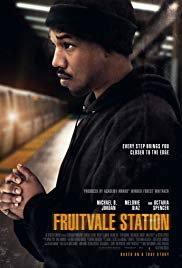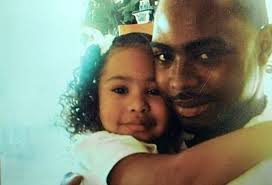1. The jury found Officer Mehserle, the man who killed Oscar Grant, not guilty of second-degree murder (which requires the intention to kill) but guilty of involuntary manslaughter. Involuntary manslaughter is defined as unintentionally causing the death of another while committing a misdemeanor or acting without “without due caution and circumspection.” California Penal Code § 192(b). What exactly did this verdict mean?
Suggested Response:
A good discussion will cover the following points: The jury found that the prosecution had not proved beyond a reasonable doubt that Officer Mehserle had intended to kill Mr. Grant. Apparently the jury gave some credit to Mehserle’s claim that in the confusion of the situation, he mistakenly thought he had pulled out his taser, instead of his gun. In other words, the jury found that the government had not proved, beyond a reasonable doubt, that Mr. Grant’s death was not the result of a tragic mistake. However, with its verdict of manslaughter, the jury did find that Mr. Grant’s killing was a criminal act and that there was no justification for the use of deadly force against him.
2. We know that many people on the train thought the police officers were not acting properly that night and started filming what was happening. We know that Oscar Grant had a young daughter, a long-term relationship with his girlfriend, and that on the night he died he had complied with his mother’s request that he and his friends take the BART (Bay Area Rapid Transit) because she thought it would be safer than driving. We also know that some incidents shown in the film did not happen. For example, Oscar didn’t try to help a dying dog the day before his death. (The filmmakers heard about a similar incident involving Oscar’s brother and put it into the movie.) We also know that there are things about Oscar that are not in the movie. For example, Oscar’s criminal record shows five convictions, one of which was for the illegal possession of a handgun. Also, while the movie shows Oscar in jail, actually, he had spent about two years of his short life in prison. What was the purpose of the filmmakers in presenting the version of Oscar’s last day shown in the movie?
Suggested Response:
The filmmakers were trying to humanize Oscar for audiences who might think that he was just some criminal who got shot while resisting arrest in an out-of-control situation in which the police felt threatened.
3. In the film, Oscar is shown trying to put his life back together and let’s assume that was true. After all, Oscar isn’t here to defend himself. So, for our question, let’s assume that the young man who was killed that night had not thought about reforming himself and was still making money by dealing drugs. Assume that he wasn’t a great father to his child. Would that have made the police officer’s actions, any less of a crime? Support your response.
Suggested Response:
The answer is that it would not, but some students may resist this conclusion. All human beings have the right to be free from police brutality. In addition, people take their own time to mature or to reform. Our hypothetical drug dealer might have reformed later when his brain matured. The concept of due process enshrined in the U.S. Constitution and that of every other state provides that people cannot be punished by the state unless they are convicted of a crime. It is fundamentally unfair to allow the police to punish someone before that person is convicted. Excessive force by police is punishment by the government and a denial of due process. The police have the right to protect themselves, and to use deadly force if necessary to do that. But when he was shot Oscar Grant was unarmed and lying face down on the ground. He was no threat to anyone.
4. To preserve your life and reduce your chances of being arrested, what must you do, especially if you are under 25, to avoid arrest when you are stopped by a policeman?
Suggested Response:
First and always, don’t give in to your emotions but think as clearly as you can. This almost always means acknowledging the policeman’s authority and obeying instructions, no matter how unjust it may be and no matter how angry it makes you. Don’t let your emotions take control of your actions. Apparently, Oscar Grant was not complying with the officer’s instructions to give the police officers his arms so that he could be handcuffed. He let his emotions at the injustice of the situation and perhaps his despair at the prospect of going back to jail get the better of his judgment. His frontal lobe was not in control. Another point to remember is that you never give the police officers a reason to feel threatened; they have guns and they are permitted, in certain situations, to use force. This means that you, that all of us, need to obey police instructions and always show the police where our hands are. If the instructions are wrong, we can make a complaint later. However, if we fail to obey, the situation will probably escalate into something much uglier than it was originally.
5. The facts indicate that while both blacks and whites were involved in the fight on the train, the police detained only blacks. What is this and what is wrong with it? (Also, note that we don’t know if Officer Mehserle participated in this part of the incident. He was not one of the first officers on the scene.)
Suggested Response:
This appears to be racial profiling which is wrong because it involves making judgments about people based on their race. It is a form of discrimination.
6. If you were a juror deciding a case involving a police officer, would you give him or her the benefit of the doubt or would you judge that officer as you would judge any other person?
Suggested Response:
A good discussion will include the following points. The law requires that all people are to be judged by the same standards. However, the circumstances of the individual are also to be considered. Police officers have special training and special responsibilities since they are the representatives of the state and are also permitted to use force. The contra argument is that they deserve some special consideration since being a police officer is acknowledged to be one of the hardest jobs in the country, and their lives are often in danger.
7. There were no blacks on the jury that judged officer Mehserle. His defense attorney filed peremptory challenges against three black people on the jury panel, and they were excused. The jury consisted of eight women and four men. Seven of the jurors were white, four were Hispanic, and one was of South Asian descent. Does this fact change your perception of whether justice was done in this case?
Suggested Response:
There is no one correct answer to this question. A good response will note that the right to a jury of one’s peers is a right that is possessed by the defendant, not by the victim. However, it would have been better to have members of the black community on the jury; after all, blacks are members of the police officer’s community.
8. In California, the penalty for involuntary manslaughter is imprisonment for 2 – 4 years. Cal. Penal Code § 193(b). Officer Mehserle received a two-year sentence but served only 11 months and was then released on parole. (Officer Mehserle received double-time credit because he served his time in the Los Angeles County Jail. Inmates in that jail receive double-time credit because the jail is overcrowded. However, to protect him from the other inmates, Mehserle was housed in a separate cell in a special unit.) Do you think that the punishment given to the police officer in this incident was adequate?
Suggested Response:
There is no one correct response. A good discussion will cover the following points: The statute sets the limits of the punishment. However, 11 months served seems light for the death of another. In addition, it should be noted that Mr. Mehserle will never be able to work as a police officer again. This is also a substantial punishment.
9. Each state has its own formulation of the damages that may be awarded for wrongful death. California’s provisions are typical of the other states and include: (1) Loss of love, comfort, society, companionship, affection, and moral support, (2) past and future loss of earnings and support (earnings are based on past history, skills, and education; support includes things like food, clothing, shelter and financial contributions), (3) medical bills incurred, and (4) funeral expenses incurred. Note that under the law, damages for wrongful death do not include the value of a life. That is something that cannot be calculated in dollars. Mr. Grant’s mother and daughter sued Bay Area Rapid Transit (BART) for Oscar Grant’s wrongful death. BART settled the cases, paying $1.5 million to Mr. Grant’s daughter, who was four years old at the time of his killing, and $1.3 million to his mother. Do you believe that this was adequate compensation to Grant’s family members for his death?
Suggested Response:
There is no one correct response to this question. Have students review and discuss each of the elements of damages awardable for wrongful death.
10. Some people have referred to a “school to prison pipeline” for young black males. What do they mean by that?
Suggested Response:
Really, it should be a reference to a pipeline of failure at school, then to the streets, and then to jail. What this means is that some young black men fail at school, then they go to the streets, and from there to jail.
11. This movie posits a generation which is post-racial. Oscar gets along well with the whites that he meets. Many observers say that most of the younger generation is post-racial. The U.S. Census Bureau reported that interracial and interethnic opposite-sex married couple households grew from 7 percent in 2000 to 10 percent in 2010, an increase of 28%. Most people agree that this trend is continuing. Question: do you think the younger generation is less racist than older generations? If so, why is this happening?
Suggested Response:
TWM has observed this in Los Angeles schools. There is no one correct response.
12. What should society do to reduce instances of police brutality?
Suggested Response:
There is no one correct response to this question. A good discussion will include improved training, the need to improve police officer discipline systems, and the requirement that police officers use body cameras.
For more discussion questions, see Film Study Worksheet for a Work of Historical Fiction and Discussion Questions for Use With any Film that is a Work of Fiction.







